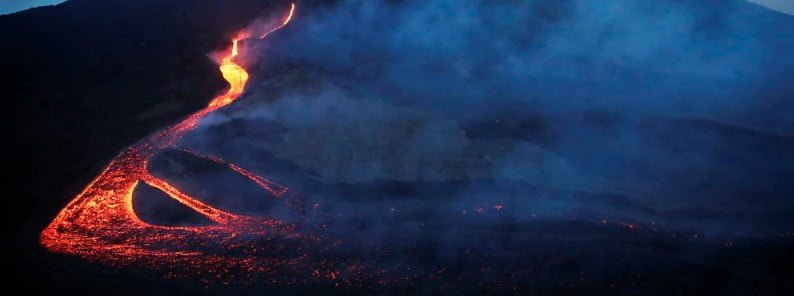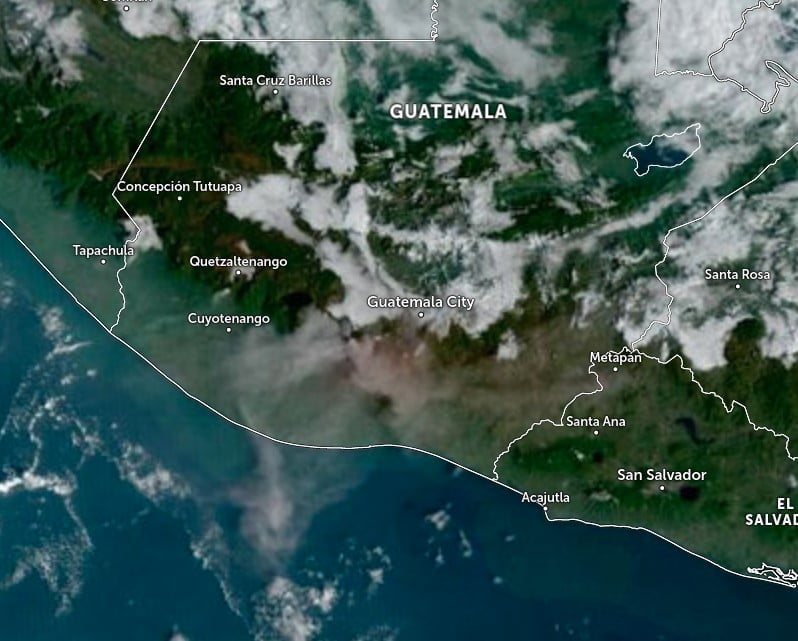Intense explosions, dense volcanic ash emissions at Fuego volcano, Guatemala

Activity at Guatemala’s Fuego volcano increased on December 11, 2022, producing intense explosions, heavy ash and notable lava flow in the Ceniza ravine.
According to Washington VAAC, dense volcanic ash reached an altitude of 5.5 km (18 000 feet) above sea level at 01:50 UTC.
By 07:10 UTC, this dense plume was rising to 7.3 km (24 000 feet) a.s.l. and extending approximately 100 km (62 miles) northeast of the summit.
A large volcanic ash emission was registered again at 11:30 UTC, moving east and rising to 4.6 km (15 000 feet) a.s.l. by 20:50 UTC.

Ash emissions continued into December 12, rising to 4.6 km (15 000 feet) a.s.l. at 08:40 UTC and moving approximately 100 km (62 miles) from the summit over the Pacific Ocean.
Webcam imagery at the time showed constant volcanic ash emissions.
Lava flow in the Ceniza ravine reached a length of about 800 m (245 feet).
Due to heavy ash produced by the eruption, the country’s largest airport and a major highway were closed on Sunday.
Residents and tourists are urged to stay away from ravines. Due to the wind direction ashfall may be recorded northwest of the volcano, in the municipalities of Acatenango, Yepocapa, and Patzicia.
A series of volcanic explosions and pyroclastic flows at the volcano on June 3, 2018, caused the deaths of at least 190 people. Official numbers mention at least 256 more missing.
Local residents estimate that approximately 2 000 people have been buried while a local organization said that up to 2 900 people may have died.
This was Guatemala’s deadliest eruption since 1929, even if we take in only the official numbers.
Geological summary
Volcán Fuego, one of Central America’s most active volcanoes, is one of three large stratovolcanoes overlooking Guatemala’s former capital, Antigua. The scarp of an older edifice, Meseta, lies between 3 763 m (12 345 feet) high Fuego and its twin volcano to the north, Acatenango.
Construction of Meseta dates back to about 230 000 years and continued until the late Pleistocene or early Holocene. The collapse of Meseta may have produced the massive Escuintla debris-avalanche deposit, which extends about 50 km (31 miles) onto the Pacific coastal plain.
The growth of the modern Fuego volcano followed, continuing the southward migration of volcanism that began at Acatenango. In contrast to the mostly andesitic Acatenango, eruptions at Fuego have become more mafic with time, and most historical activity has produced basaltic rocks.
Frequent vigorous historical eruptions have been recorded since the onset of the Spanish era in 1524, and have produced major ashfalls, along with occasional pyroclastic flows and lava flows.2
References:
1 Volcanic Ash Advisories issued by Washington VAAC on December 11 and 12, 2022
2 Fuego – Geological summary – GVP
Featured image: Teledos

Commenting rules and guidelines
We value the thoughts and opinions of our readers and welcome healthy discussions on our website. In order to maintain a respectful and positive community, we ask that all commenters follow these rules.